How to grow and care of Ficus tree
Not every person has space for a garden but anyone can grow plants! Also there are advantages to gardening indoors and we’ll assist you choosing the best plants like Ficus tree.
The Ficus tree may look like a simple plant with narrow, drooping, glossy green leaves, but it is a tropical category which is requires a specific growing needs.
A family of the Ficus Audrey is easy to grow and care for indoors and has same growth habit and looks. Whereas, it can be famous from the fiddle leaf by its smaller, a bit fuzzy rectangular leaves and smooth, light-toned stem.
Key Features of Ficus Tree:
- Scientific name: Ficus Benjamina
- Common name: Ficus tree, ficus, weeping ficus, and weeping Fig.
- Family: Moraceae
- Plant type: Tree
- Mature size: 5-10 ft. indoors, 65-100 ft. outdoors.
- Native Land: Asia
- Growing zones: 9 to 11, US
- Exposure to the sun: Partial
- Soil Type: Moist but well-drained

Ficus Audrey Tips for Beginners
- Best Soil Type: Ficus Audrey prefers soil that is moist, not dry, but with plenty of drainage.
- Right Spot to Put It: Place your Ficus Audrey in a window with bright, indirect light, but not one that gets lots of direct sunlight. Avoid direct light to prevent leaf burn.
- Best Method to Water It: Water when the top 1-2 inches of soil feels dry. Don’t let it dry out completely.
- Repotting: Repot your Ficus every 2 to 3 years to refresh the soil and give it more space to grow.
In This Article
How to Care of Ficus Tree

Ficus trees are very easy to care when they fixed into their new place. After they settle into their new home, they will thrive in a spot with bright indirect light and a regular watering routine.
Put your plant in a full sun position that receives up to 7 hours of direct sunlight in a day. Your Ficus is a magnificent, delightful and trouble-free indoor plant.
Types of Ficus Tree
1. Ficus Daniella

This is an evergreen shrub or small tree. It’s belong to Moraceae family, which includes plants such as, mulberries and figs. Ficus Benjamina ‘Daniella‘ is delicate Weeping fig and it is perfect choice to decor a corner in home or office.
2. Fiddle Leaf Fig
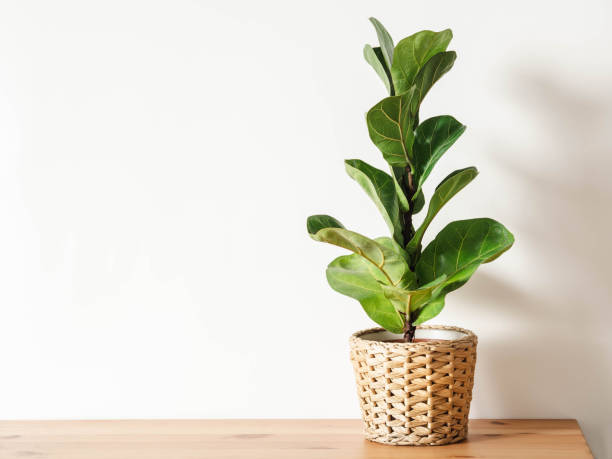
Fiddle Leaf Fig, also known as the Ficus Lyrata, is a species of flowering plant. They can be difficult to care whereas, the plant settled into your environment as far as you learn its watering routine. Fiddle Leaf Figs need a lot of direct natural light.
3. Ficus Alii

The Ficus Alii, usually called the Banana Leaf Fig, is a category of fig tree belongs to the genus Ficus and the family Moraceae. By comparison Ficus Alii is a new tree in the Ficus group. This plant is easy to look after as compare to other Ficus plants. The long and narrow leaves of this plant looks like a palm tree.
4.Rubber Tree
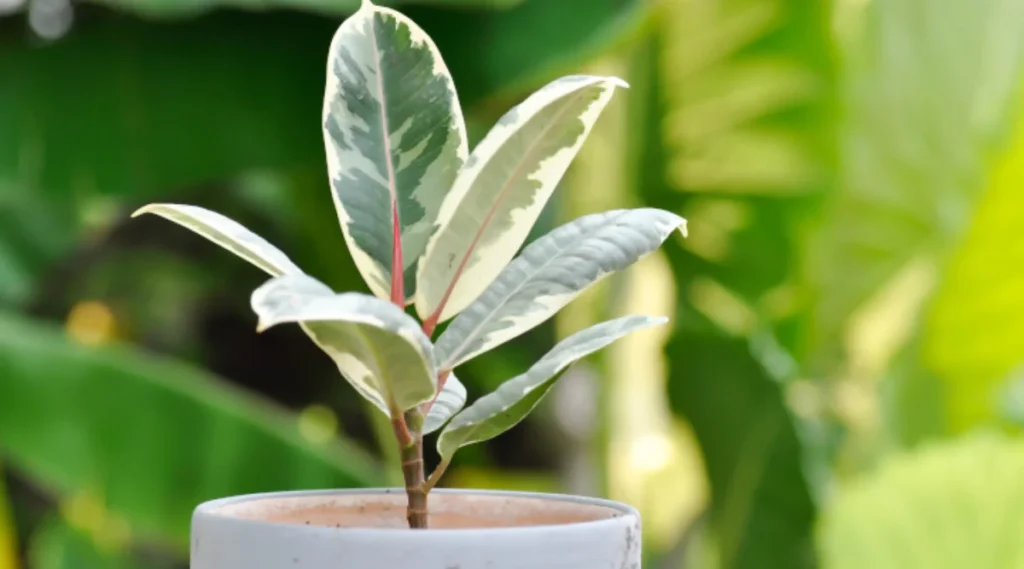
Rubber tree (Ficus elastica), also famous as rubber plant. It is a great choice as a houseplant because it is broad, glossy and impressive annual average growth rate. This plant can grow up to six feet tall indoors. It is only requires proper care and hot temperatures yearly. Note that rubber tree sap is toxic to dogs and cats1, so take special care if you have pets.
5. Weeping Fig

The weeping fig (Ficus benjamina) is a kind of flowering plant in the fig family, Moraceae. It is precious for its elegant, glossy and oval-shaped leaves. It is popular choice as a houseplant. In its natural environment, weeping fig can grow up to 15-30 meters long tree, but indoor cases are typically often smaller.
6. Audrey Ficus
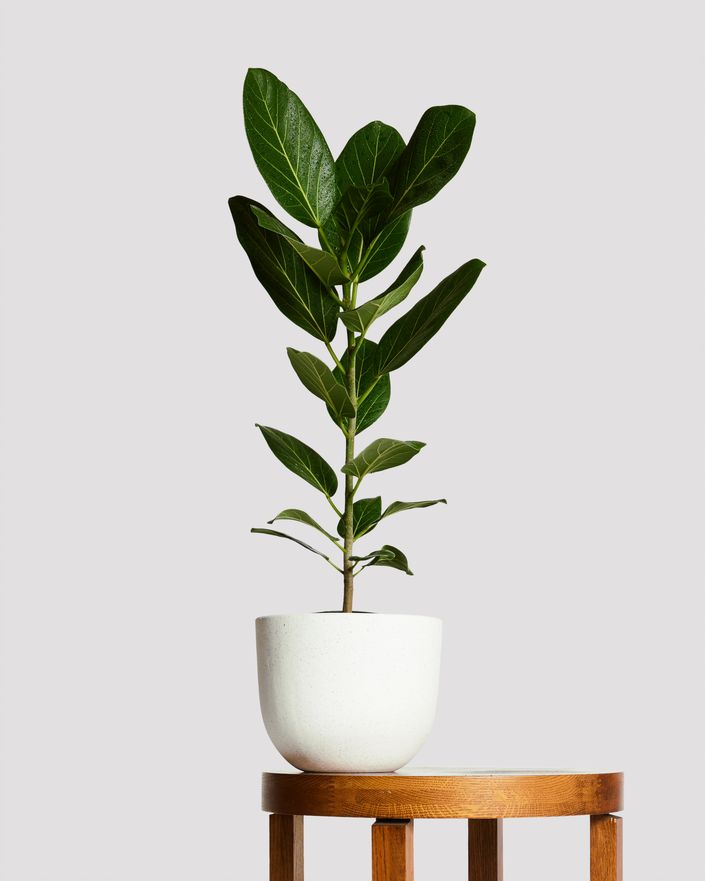
The Ficus Audrey, usually called as Ficus Benghalensis, is a favorite for its eye-catching velvety, deep green leaves with bold veins. It offers the dramatic look of a Fiddle Leaf Fig but with much easier to care for. Native to India, it can grow to immense heights and widths. Fortunately, indoors, the Ficus Audrey remains much more easy in size.
Best way to Propagate a Ficus Tree
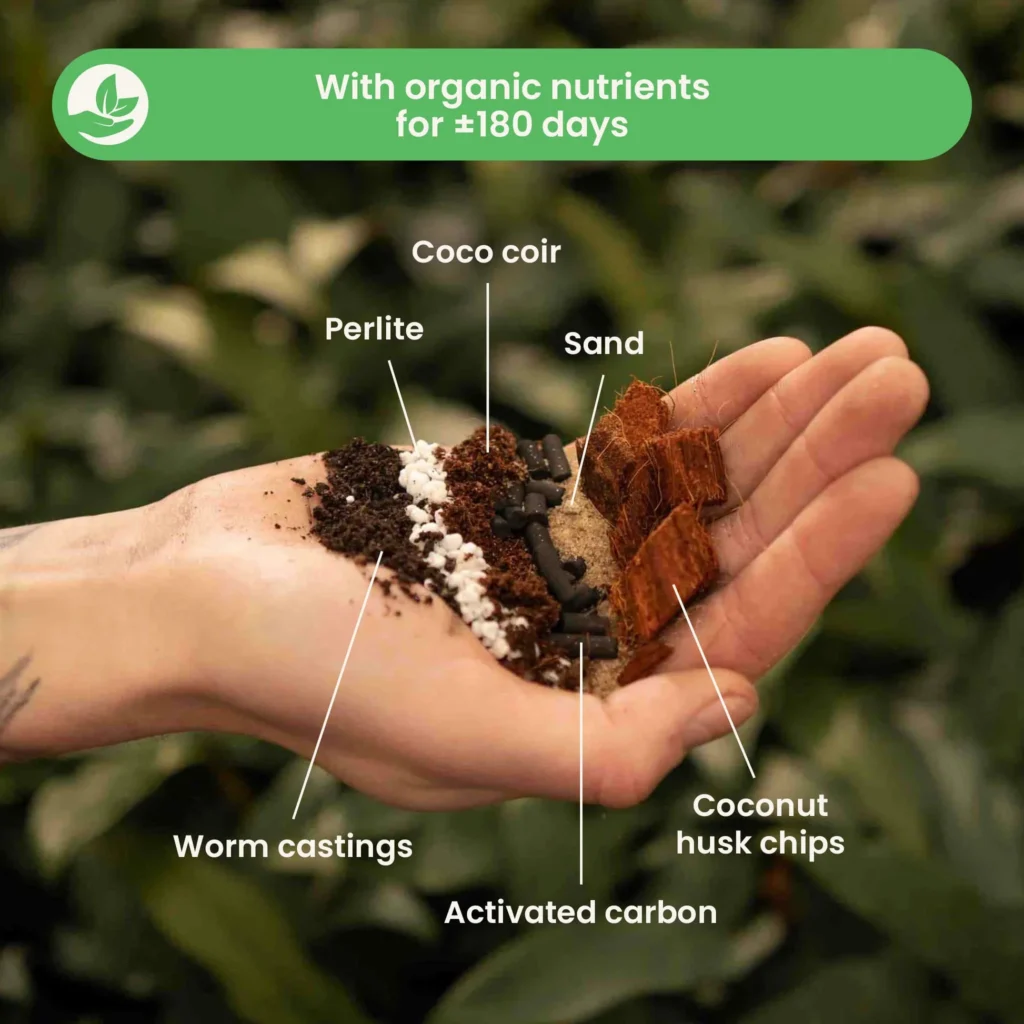
Stem cutting:
This is the most common and easy method to grow a Ficus:
- Take a fresh or fine stem cutting with a node and at least one or two leaves.
- Put the cutting in a container of clean, chlorine-free water at normal temperature.
- Put down the cutting in a spot with indirect sunlight.
- After a few weeks, roots will appear, the propagation will be successful and the plant will be prepare for repotted.
- Conscientiously transplant the cutting into a pot with soil.
Growing in pots
How to plant in a pot: A healthy Ficus will quickly outgrow both its pot and your house. Replant every two year to slow its growth and manage its size. If you notice the roots are coming out of the drainage holes at the bottom of the pot, then it’s time to pot up. Spring is the best time to repot because at that time plant is growing actively.
To transplant your Ficus:
- Gently press the soil to cut out air pockets and water the plant completely or carefully.
- Choose a new pot and make sure it’s 2 to 3 inches wider than the previous one and lightly deeper than the new one.
- Carefully remove the plant from its current pot, gently loosening any roots if they are tightly wound around the root ball.
- Add a small amount of fresh, high-quality seeding soil in the bottom of the new pot.
- Put the plant in the present pot at the same level it was in the previous container.
- Fill around the root ball with fresh potting compost, making sure it reaches the base of the stem.
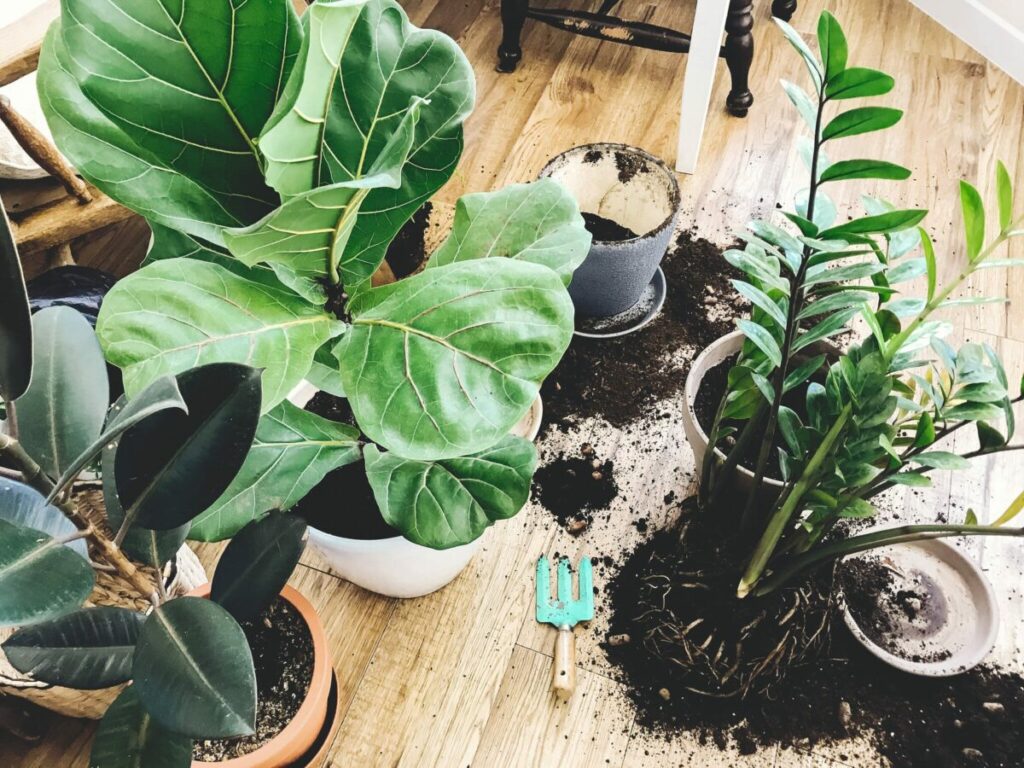
Common Pests and How to deal with Them

The Ficus is a famous, attractive and easy to take care houseplant that requires minimal care once it is well-established and provided with its basic needs. While, like all plants, it can be affect by some pests. This guide will take you through the most common problems that can impact Ficus plants.
Insects commonly spotted on Ficus:
- Scale insects
- Mealybugs
- Thrips
- Whitefly
The recommended way to manage these insects is to inspect the plant regularly – either weekly or biweekly to check for any unusual signs, such as curling of the leaves, noticeable leaf dropping, or yellowing.
Common Issues and How to Solve Them
Most people face problems when growing plants, and sometimes we are more worried than we need to. There are four common issues that many Ficus grower experience, so it's helpful to know about them before purchasing a Ficus.
1. Leaf Drop
This is the a common issue many people face their Ficus tree, normally effected by a change in temperature. If you move your Ficus plant from an outdoor patio to indoors, you may notice leaf drop. It can also happen in the fall in cold areas when people set about heating their homes again.
Solution: Ficus trees like a fixed temperature and humidity conditions. Just a small temperature change of 5 to10 degrees can effect the leaf drop. The only method to care for a plant during this time, is a stable environment, water it regularly and fertilize it monthly. With proper care, the tree should recover.
2. Leaf Spot Fungus
These are commonly known as Cercospora spp. This appears like small black dots on the backside of the tree’s leaves. The leaves may yellow and eventually fall off. Remove the affected leaves and sprinkle with Benlate following the instructions carefully. Do not mist the leaves.
Solution: To prevent the spread of the disease, apply sulfur sprays or copper-based fungicides once in a week at the first sign of infection. These organic fungicides will not eliminate the leaf spot but will stop the spores from germinating.
3. Anthracnose
This appears as rusty-looking spots on stems and leaves, and the plant may also ooze from these areas. To address this, remove the affected leaves.
Solution: Manage good sanitation by disposing of all affected plant parts. Ensure the plant receives proper light, water, and fertilizer to improve the plant’s ability to prevent fungus attack. Chemical treatments are not needed.
4. Ficus Oozing Sap
This issue is caused by sucking pests, typically mealybugs and/or scale. Mealybugs appear as small cotton-like clusters, whereas, scale looks like bumpy white or black spots on the tree’s stems and body.
Solution: To solve this problem, apply Schultz’s Fungicide 3, horticultural oil, or a soapy solution of 1 tablespoon of soap to 1 pint of water. If the tree isn’t treated, it will likely to die.
Frequently Asked Questions
Yes, many types of Ficus trees are good as indoor houseplants. They are popular for their lovely greenery and their ability to thrive in indoor environments with the right care. These fancy plants also help to improve indoor air quality by absorbing carbon dioxide and releasing oxygen. Varieties like Ficus benjamina, Ficus lyrata, and Ficus elastica are commonly propagated indoors.
Ficus houseplants prefer bright, indirect light. Direct sunlight can lead to leaf drop or scalding. The ideal spot for a Ficus is near a window with filtered light.
Ficus trees do not need frequent watering. The general guideline is to water when the soil feels dry to the touch two inches down. Overwatering can cause root rot, so it’s important to make sure the pot has drainage properly. The plant will require more water in hot months, with less water in winter when plant growth slows.
Ficus trees are quite easy to care for, but they do need attention to their special requirements.. They can be sensitive in unstable environment, like shifts in light, temperature, and watering. If you care frequently, they can be quite healthy and long-lived.
Ficus plants are great choice for improving indoor air quality by removing pollutants. They also enhance a natural beauty to indoor spaces and can have a calming, stress-reducing atmosphere.
This is the most common problem caused by sudden changes such as, light, temperature, or moved to a new location. To prevent this, keep your plant out of direct sunlight, avoid exposure to hot or cold drafts, and provide a comfortable environment to reduce stressing plants.
Indoors, most Ficus trees reach a height of 3 to 6 feet, depending on types and growing conditions. Some varieties, such as, Ficus benjamina, can grow taller if you give enough space with proper care.
The best soil for a Ficus is a well-draining, nutrient-rich potting mix. A general-purpose potting soil mixed with some perlite or sand to enhance drainage works well. The soil should hold moisture without becoming waterlogged.
Ficus plants are mildly toxic. The milky sap may effect skin irritation in both pets and humans. Ingestion of any part of the plant may lead to stomach upset.
The plant is toxic to touch and taste, causing skin irritation and digestive/stomach issues if ingested. Children are special vulnerable so, watch for mouth swelling or drooling. To prevent exposure, keep the plant out of reach, handle it with gloves, and consider choosing safer plants for homes with children or pets.
How to display Ficus in your Home or Office
There are many creative ways to use Ficus plant in your home or office decor. Here are some suggestions:
- Display a Ficus in a decorative pot on a living room shelf or table, paired with decorative accessories like candles and statues.
- Use a larger Ficus as a focal point in a sunlit corner of your living or dining room, near a window or sliding glass door that receives bright indirect light.
- You can combine different Ficus plants together with other plants that require the same care.
- Use pots which are made from different materials like ceramics, clay, stone or resin. Choose that color which is contrasts with your room’s color scheme.
- Choose that pots which suit’s your home’s style.

